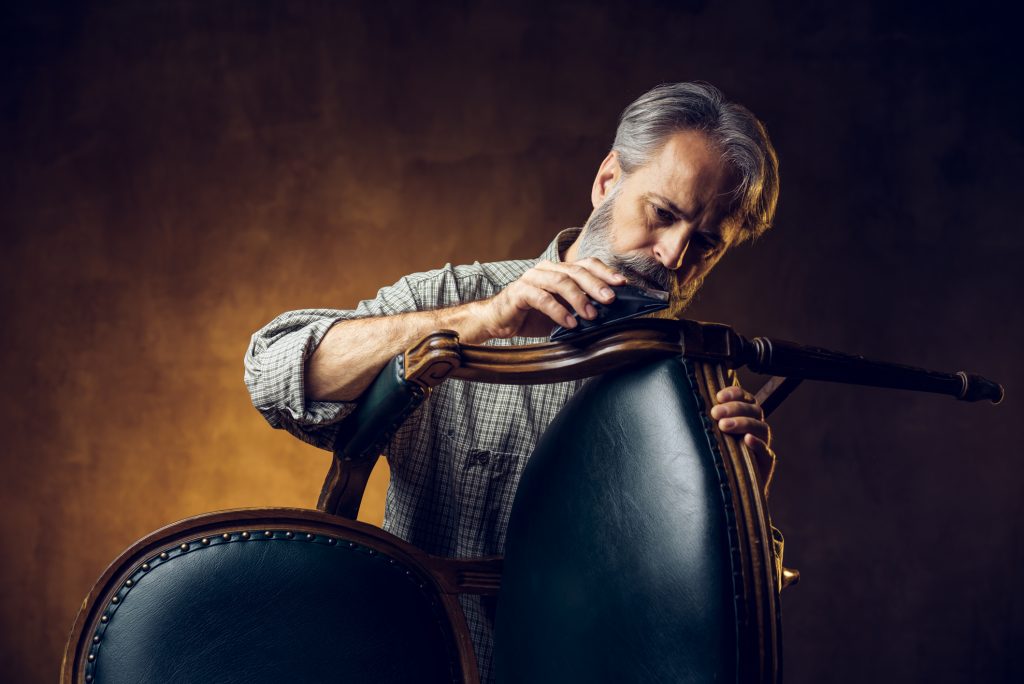Restoring antique furniture doesn’t have to be difficult—our beginner’s guide is here to help!
So – you’ve got your hands on a one-of-a-kind antique furniture piece or maybe a vintage mirror, but it’s looking a little worse for wear? Rest assured, there are some simple hacks to bring your unique find back to life with a little TLC. Whether you’ve developed a newfound appreciation for antique furniture, or you’re an avid collector – our tips will have you revitalising your prized pieces in no time.

Clean With Care
Before you set to sanding, staining or stitching your piece back to its former glory, you’re going to need to give it a good clean. It’s important to proceed with caution at this point. Many household cleaning agents contain harsh chemicals which can worsen the condition of your genuine antique furniture piece. The right cleaning solution will depend on the material you’re working with. For wood, wicker and rattan, an oil based wood cleaner works well to lift dirt, grime and wax. Wipe with a cloth or rag, using a separate cloth for cleaning and then drying.
Preserve The Original Finish
Before you rush in with metallic paint and a hack saw, take a moment to consider what your intention for your antique piece is. Often over-restoring or intense makeovers of a piece will destroy the value of your antique furniture, along with its unique beauty. Minor signs of use and wear are expected from old furnishings and can actually add to the charm of an item. If your antique furniture isn’t too damaged, a good stain or refinish should be enough to bring it back to life.
Repair
If your antique furniture piece is broken or damaged, you may need to repair it to get any functional use out of it. Sometimes a missing chair leg or structural element will need custom making to be replaced. This will usually require some professional intervention, so consider how much you are willing to invest in repairing your genuine antique furniture before purchasing it.
Other smaller fixes are very manageable for the DIY novice. Small cracks can be filled in with putty, while breaks and minor joint damage can be solved with wood glue. Hide glues should be your best friend when restoring antique furniture. This is simply because they are reversible, so you can dissolve and re-join the parts down the track.
Refinish
The final (and most satisfying) step to restoring your antique furniture is to give it a new coat or stain. You may want to paint your antique piece to blend it with the existing furnishings within your home. Just be wary that this will essentially nullify the value of your antique furniture as you’ve severely changed its appearance.
anFor simple restoration, most will opt for a stain or finish that mirrors the original look of the piece. There are various finishes to choose from. Shellac is popular and protective, but bear in mind it is not water, heat, or alcohol proof. Lacquer, varnish or polyurethane will protect the wood while also providing an attractive stain.
Leave a Reply